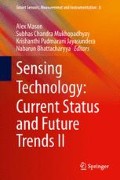Abstract
Up-sampling problem is very crucial in image communication as it plays an important role in restoring the low resolution 2-D signals at the receiver. Generally, at the transmitting end, a video intra frame is sub-sampled to lessen the bandwidth required for transmission. At the receiver, the resolution of the sub sampled intra frame is improved to the original by a suitable interpolation technique. This process lessens the signal bandwidth for transmission through a communication link and hence avoids channel congestion. Most of the up-sampling scheme based on interpolation generates undesirable blurring artefacts in the up-sampled video intra frame. This results in signal deterioration in terms of loss of fine details and critical edge information. Such problems occur due to the resemblance of the up-sampling process with the low pass filtering operation. In order to resolve this problem, both crisp-rule and fuzzy-rule based hybrid interpolation techniques are proposed here. A crisp-rule based technique (Proposed-1) although gives better results in certain cases but fails to provide considerable performance under varying constraints such as variation in zoom in or zoom out conditions, change in compression ratio and video characteristics. This is basically due to improper mapping by crisp-rule based technique between input and output values. Such problems can be avoided by fuzzy-rule based technique (Proposed-2) which employs a proper and precise mapping between input and output values using fuzzy inference system. This book chapter critically compares the capabilities and limitations of crisp-rule and fuzzy-rule based up-sampling techniques and their relevance in perspective of video scalability, compatibility, complexities, quality enhancement and real time applications.
Access this chapter
Tax calculation will be finalised at checkout
Purchases are for personal use only
References
T.M. Lehmann, C. Gonner, K. spitzer, Survey: Interpolation methods in medical image processing. IEEE Trans. Med. Imaging 18(1), 1049–1075 (1999)
A. Goshtasby, D.A. Turner, L.V. Ackerman, Matching of tomographic slices for interpolation. IEEE Trans. Med. Imaging 11, 507–516 (1992)
J. Lu, X. Si, S. Wu, An improved bilinear interpolation algorithm of converting standard definition images to high definition images, in WASE International Conference on Information Engineering, pp. 441–444 (2009)
R.G. Keys, Cubic convolution interpolation for digital image processing. IEEE Trans. Acoust. Speech Signal Process ASSP-29(6), 1153–1160 (1981)
H.S. Hou, H.C. Andrews, Cubic splines for image interpolation amd digital filtering. IEEE Trans. Acoust. Speech Signal Processsng, vol. ASSP-26 (1978)
S.K. Park, R.A. Schowengerdt, Image reconstruction by parametric cubic convolution. Comput. Vis. Graphics Image Processing 23(3), 258–272 (1983)
L.A. Ferrari, J.H. Park, A. Healey, S. Leeman, Interpolation using a fast spline to transform (FST). IEEE Trans. Circuits Syst. I 46, 891–906 (1999)
W. Ye, A. Entezari, A geometric construction of multivariate sinc functions. IEEE Trans. Image Processing 19(12) (2011)
W. Burger, M.J. Burge, Principles of Digital Image Processing: Core Algorithms (Springer, Berlin, 2009), pp. 231–232
L.P. Yaroslavsky, Signal sinc-interpolation: a fast computer algorithm. Bioimaging 4, 225–231 (1996)
S.R. Dooley, A.K. Nandi, Notes on the interpolation of discrete periodic signals using sinc function related approaches. IEEE Trans. Signal Processing 48, 1201–1203 (2000)
T. Blu, M. Unser, Quantitative Fourier analysis of approximation techniques: Part I. Interpolators and projectors. IEEE Trans. Signal Processing 47, 2783–2795 (1999)
I. Daubechies, Ten Lectures on Wavelets (SIAM, Philadelphia, 1992)
R. Dugad, N. Ahuja, A fast scheme for image size change in the compressed domain. IEEE Trans. Circuit Syst. Video Technol. 11, 461–474 (2001)
J.I. Agbinya, Two dimensional interpolation of real sequences using the DCT. Electron. Lett., 29(2), 204–205 (1993)
A. Acharya, S. Meher, An efficient, adaptive unsharp masking based interpolation for video intra frame upsampling, in Proceedings of IEEE Asia Pacific Conference on Postgraduate Research in Microelectronics and Electronics, Prime Asia, Dec. 2012, pp. 100–105
A. Acharya, S. Meher, Region adaptive unsharp masking based Lanczos3 interpolation for video intra frame up-sampling, in Proceedings of IEEE 6th International Conference on Sensing Technology, ICST, Dec. 2012
R. Gonzalez, R. Woods, Digital Image Processing (Pearson Publications, Upper Saddle River, 2008)
L.A. Zadeh, The concept of a linguistic variable and its application to approximate reasoning (III). Inf. Sci. 9, 43–80 (1975)
Author information
Authors and Affiliations
Corresponding author
Editor information
Editors and Affiliations
Rights and permissions
Copyright information
© 2014 Springer International Publishing Switzerland
About this chapter
Cite this chapter
Acharya, A., Meher, S. (2014). Region Adaptive, Unsharp Masking Based Lanczos-3 Interpolation for 2-D Up-Sampling: Crisp-Rule Versus Fuzzy-Rule Based Approach. In: Mason, A., Mukhopadhyay, S., Jayasundera, K., Bhattacharyya, N. (eds) Sensing Technology: Current Status and Future Trends II. Smart Sensors, Measurement and Instrumentation, vol 8. Springer, Cham. https://doi.org/10.1007/978-3-319-02315-1_3
Download citation
DOI: https://doi.org/10.1007/978-3-319-02315-1_3
Published:
Publisher Name: Springer, Cham
Print ISBN: 978-3-319-02314-4
Online ISBN: 978-3-319-02315-1
eBook Packages: EngineeringEngineering (R0)

